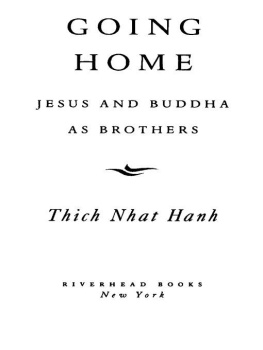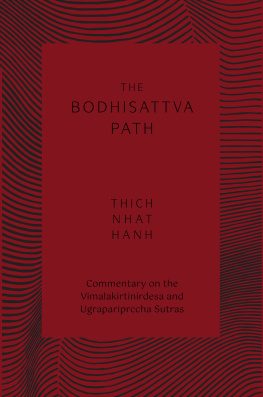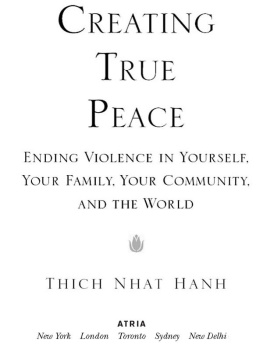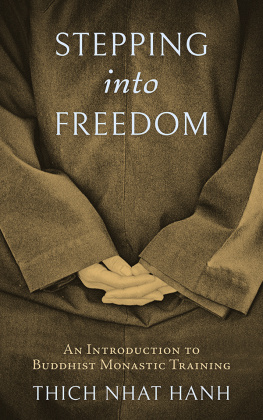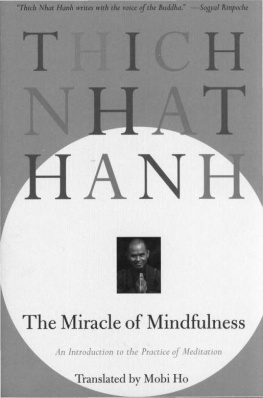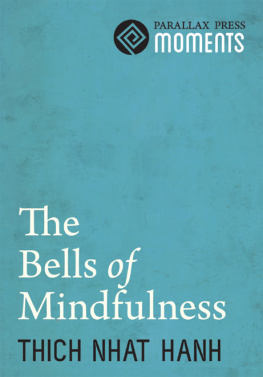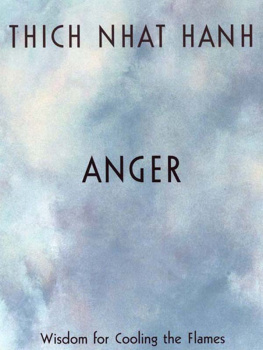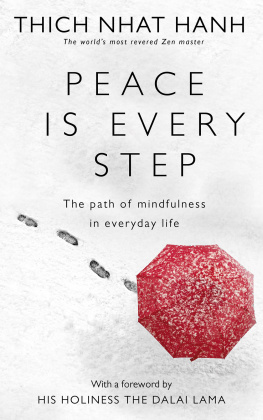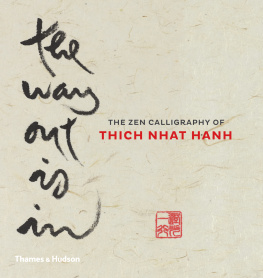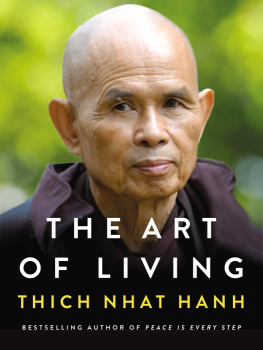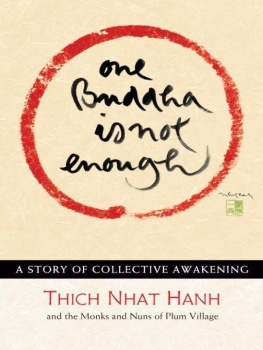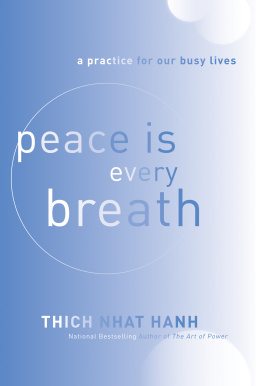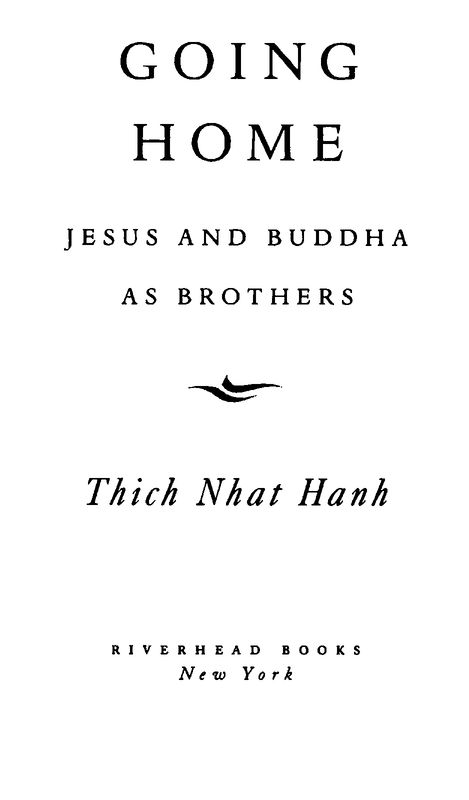Table of Contents
Praise for Thich Nhat Hanh
He shows us the connection between personal, inner peace and peace on earth.
His Holiness the Dalai Lama
Thich Nhat Hanh is a real poet.
Robert Lowell
Thich Nhat Hanh writes with the voice of the Buddha.
Sogyal Rinpoche
Thich Nhat Hanh is more my brother than many who are nearer to me in race and nationality, because he and I see things the exact same way.
Thomas Merton
Praise forLiving Buddha, Living ChristNamed Among the Top Ten Titles for Well-Read Adults bySchool Library Journal
The message: Peace, love, and compassion are central to the teachings of Buddha and Christ, and people of both faiths should be tolerant of one another.
The Washington Post
Marked by the beauty and simplicity of [Nhat Hanhs] mindful wisdom, his evocative prose, and his lucid insights. Highly recommended.
Library Journal
Reminds us in his writing that if we accept good but not evil, joy but not suffering, were ignoring half of reality; that we cant just be, we can only, in his term, inter-be.... Can restore the spiritually zonked and return them, refreshed, to the present moment.
Mirabella
Nhat Hanh tells people not to abandon their own religious traditions, but to use Buddhist meditation to rediscover the values in those traditions.
The Seattle Times
Important ... Nhat Hanhs clearest and strongest presentation to date of the relationshipactual and possiblebetween Christianity and Buddhism.
Publishers Weekly
He has immense presence and both personal and Buddhist authority. If there is a candidate for Living Buddha on earth today, it is Thich Nhat Hanh.
Richard Baker
Praise for Fragrant Palm Leaves
One of the sweetest and most personally revealing of Thich Nhat Hanhs books, it shows the planting of his seeds of remarkable wisdom.
Jack Kornfield,
author of A Path with Heart
Enlightening ... To read his thoughts is to understand the connection between public life and private life, and that such interbeing makes for ecstatic joy.
Maxine Hong Kingston
One of the greatest teachers of our time ... In Fragrant Palm Leaves, the venerable poet emerges poignantly disclosing the essence of enlightenment, and also life itself!
Robert Thurman, author of Inner Revolution
Informative and inspiring.
Publishers Weekly
OTHER BOOKS BY THICH NHAT HANH
Anger
Being Peace
Be Still and Know
The Blooming of a Lotus
Breathe! You Are Alive
Call Me by My True Names:
The Collected Poems ofThich Nhat Hanh
Cultivating the Mind of Love
For a Future to Be Possible
Fragrant Palm Leaves
Heart of the Buddhas Teaching
The Heart of Understanding
Living Buddha, Living Christ
The Long Road Turns to Joy
Love in Action
The Miracle ofMindfulness
No Death, No Fear
Old Path, White Clouds
The Path of Emancipation
Peace Is Every Step
Present Moment, Wonderful Moment
The Sun My Heart
Taming the Tiger Within
Teachings on Love
Touching Peace
Transformation and Healing
INTRODUCTION
At the beginning of the last great Ice Age, Neolithic artists created a series of extraordinary paintings deep inside the earth in the region of southwest France now known as the Dordogne. These masterworks may be the oldest-known expression of the human spirit. The land above these subterranean cathedrals is today rich and fertile, blessed not only with a hospitable climate, rich soil, and abundant water but also with a people who nurture the land. It is to their great credit that this region of France, unlike so much of the earth, is more fertile now than when the first Homo sapiens set foot here thirty thousand years ago.
Today, the region is primarily agricultural, supporting vineyards, plum orchards, and fields of sunflowers. Growing and eating good food is a way of life, a passion, and an art. Few tourists come to this remote region east of Bordeaux on their tour of la belle France, and fewer still explore the narrow roads and small villages. The people here do not yet move to the frantic pace of modern city life. They are still attuned to the natural rhythm of the sun and the seasons passing over the fields.
Located here in this cradle of humanity is a string of three small settlements, or hamlets, two of which are old farms, one a former youth hostel. The sign out front, faded and slightly askew, lets visitors know that they have arrived at Plum Village or, in French, Village des Pruniers. The buildings in Plum Village at first appear to be typical of the surrounding countryside. Built mostly of stone, they have stood for centuries as barns, farmhouses, tool sheds, and granaries. On closer examination, one sees that they are now being used as kitchens, dining rooms, classrooms, sleeping quarters, and meditation halls.
The walls, many of which were once plastered, have been stripped of all ornamentation, revealing the rocks, clay, and mud used to construct them centuries ago. Here the heaviness and richness of the earth itself is revealed. The windows are simple, the floors unfinished, and the heat often comes from wood burning in crude stoves fashioned from old barrels.
The dirt paths are lined with flowers, bamboo, and fruit trees. There are also small signs scattered here and there advising the walker to breathe and smile, that each moment is a wonderful moment, or that peace is every step. The rustic beauty and charm of the place, however, does not account for the most remarkable characteristic of Plum Villagethe deep quiet.
The quietness of Plum Village is more than the absence of noise. It is something else. It is truly peaceful here. People move slowly, smiles are contented, steps are deliberate, breaths deeper and longer. The land itself somehow seems softer, and the weather gentler even when it is cold. In late December, with the Atlantic Gulf Stream coming ashore on the coast only one hundred miles west, Plum Village tends to be very rainy. The paths become muddy, and the deep clay sticks to the soles of shoes. Outside of the main meditation hall, feet are caked with this red soil. The people awaiting entry huddle beneath umbrellas, searching for a dry spot to store their shoes. They enter the hall quickly, or as quickly as the pace of life in Plum Village allows, and find a chair or cushion upon which to sit.
The day has been cold and wet, but everyone is feeling warm. Christmas is one of the biggest festivals of the year in Plum Village, and, except for the summer retreat, it attracts the most visitors. The day began at 4:30 a.m. with meditation and chanting, just as in the Christian monasteries only a few miles away. Here in Plum Village, however, the chanting is not in Latin or French but rather in Vietnamese.
The monks and nuns assembled here are French, Thai, English, Irish, American, German, South African, Vietnamese, Japanese, and, most noticeably, Buddhist. For although this land has been a strong-hold of Christianity for centuries, today it also supports a more ancient path. This day the songs and chants have come from both the Christian and the Buddhist traditions. In the early morning darkness, Christmas carols have been sung along with the daily litany of Buddhist sutras, gifts have been exchanged, and flowers have been laid at the altar to honor both the namesakes of Christianity and of Buddhism. Dinner, which has just ended, included traditional Christmas dishes from all of the nationalities represented. Songs have been sung in a dozen different languages. Among the visitors to Plum Village this day are priests and nuns from the great Christian citadels of Ireland, France, and Italy. As people take their seats, about half on floor cushions in the classic cross-legged style of the East and half in plastic chairs being unstacked from the corner, two tall American Buddhist monks, one speaking softly in his Texas twang, work together to get the fire going in the old cracked stove.

